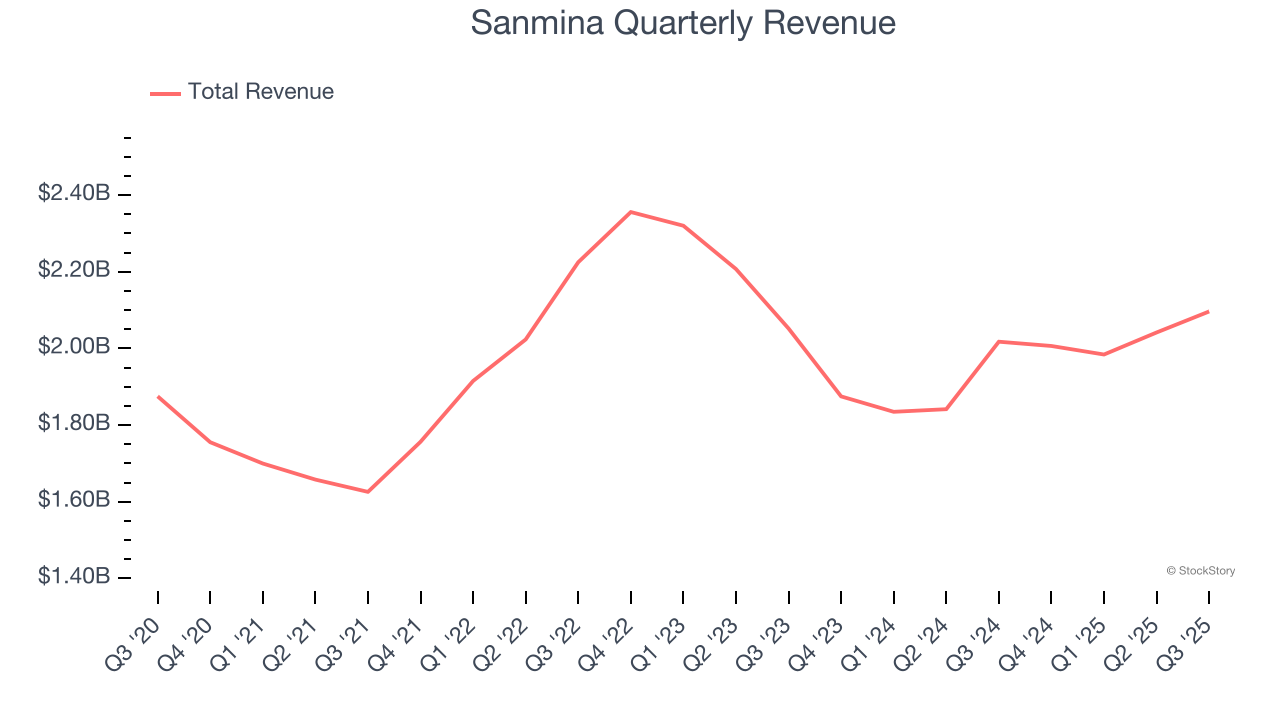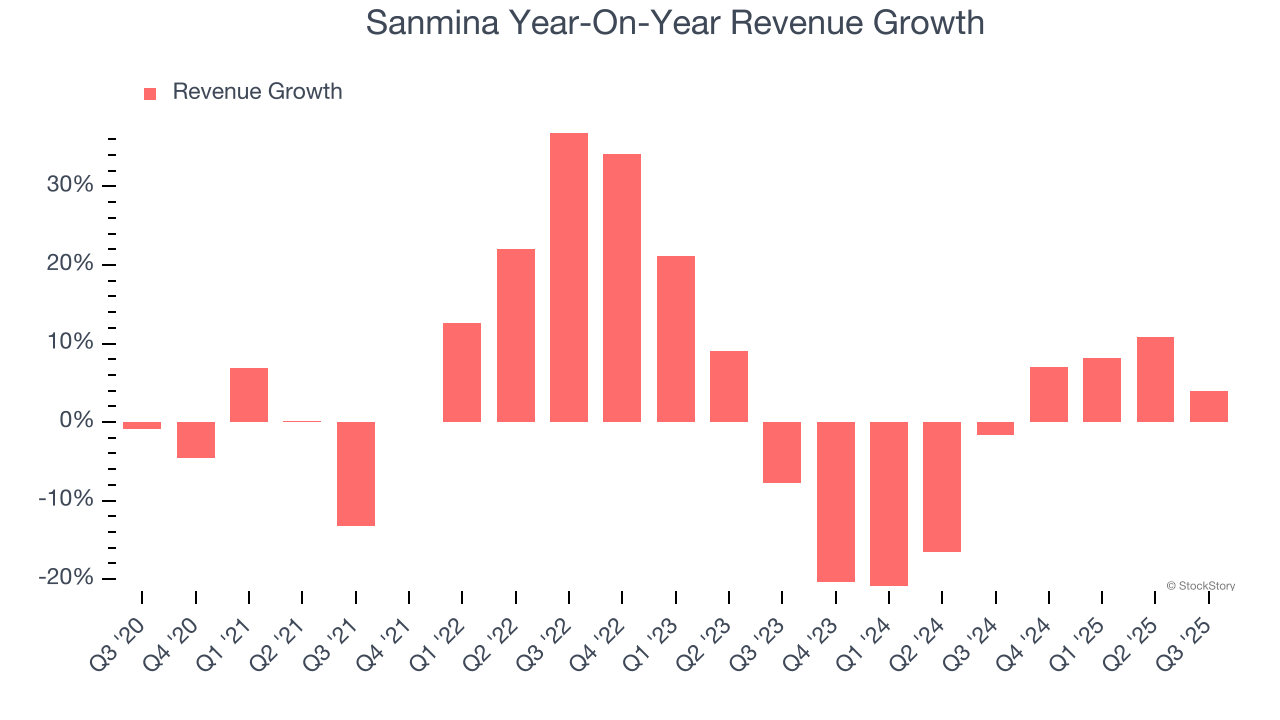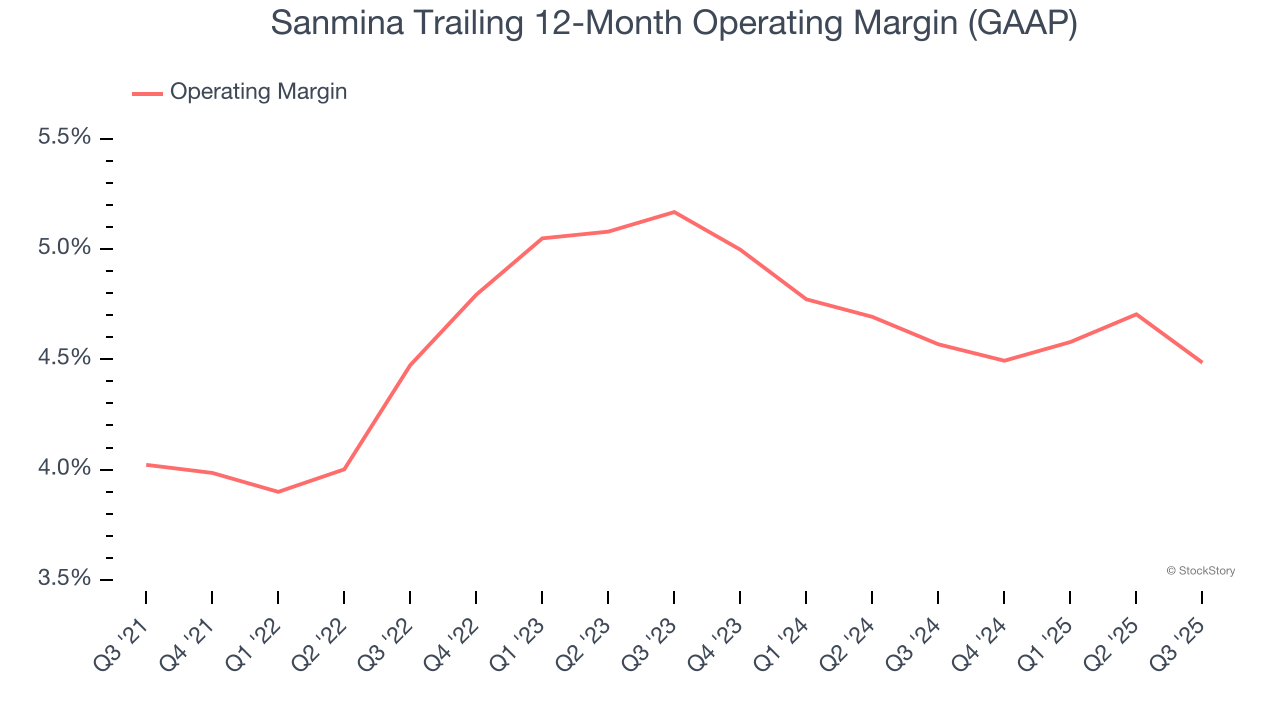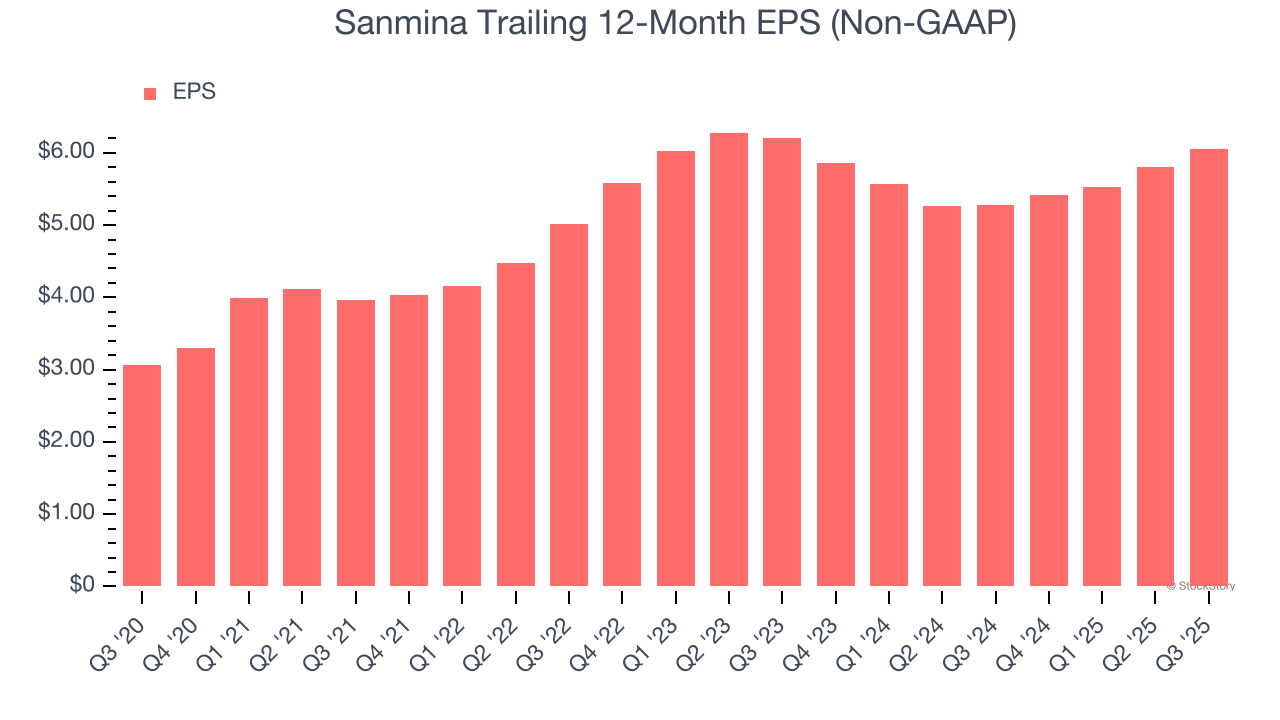|
|
|

|
|||||

|
|

Electronics manufacturing services company Sanmina (NASDAQ:SANM) beat Wall Street’s revenue expectations in Q3 CY2025, with sales up 3.9% year on year to $2.10 billion. On top of that, next quarter’s revenue guidance ($3.05 billion at the midpoint) was surprisingly good and 43.3% above what analysts were expecting. Its non-GAAP profit of $1.67 per share was 6.7% above analysts’ consensus estimates.
Is now the time to buy Sanmina? Find out by accessing our full research report, it’s free for active Edge members.
"We delivered strong results for the fourth quarter. Ongoing strength in the Communications Networks and Cloud and AI Infrastructure end-markets, combined with our team's execution and disciplined cost management, drove performance that met or exceeded our outlook," stated Jure Sola, Chairman and CEO.
Founded in 1980, Sanmina (NASDAQ:SANM) is an electronics manufacturing services company offering end-to-end solutions for various industries.
A company’s long-term performance is an indicator of its overall quality. Any business can experience short-term success, but top-performing ones enjoy sustained growth for years. Unfortunately, Sanmina’s 3.2% annualized revenue growth over the last five years was sluggish. This fell short of our benchmark for the industrials sector and is a poor baseline for our analysis.

Long-term growth is the most important, but within industrials, a half-decade historical view may miss new industry trends or demand cycles. Sanmina’s performance shows it grew in the past but relinquished its gains over the last two years, as its revenue fell by 4.6% annually. Sanmina isn’t alone in its struggles as the Electrical Systems industry experienced a cyclical downturn, with many similar businesses observing lower sales at this time.

This quarter, Sanmina reported modest year-on-year revenue growth of 3.9% but beat Wall Street’s estimates by 2.2%. Company management is currently guiding for a 52% year-on-year increase in sales next quarter.
Looking further ahead, sell-side analysts expect revenue to grow 7.4% over the next 12 months. Although this projection suggests its newer products and services will spur better top-line performance, it is still below the sector average.
Software is eating the world and there is virtually no industry left that has been untouched by it. That drives increasing demand for tools helping software developers do their jobs, whether it be monitoring critical cloud infrastructure, integrating audio and video functionality, or ensuring smooth content streaming. Click here to access a free report on our 3 favorite stocks to play this generational megatrend.
Sanmina’s operating margin might fluctuated slightly over the last 12 months but has remained more or less the same, averaging 4.6% over the last five years. This profitability was lousy for an industrials business and caused by its suboptimal cost structureand low gross margin.
Analyzing the trend in its profitability, Sanmina’s operating margin might fluctuated slightly but has generally stayed the same over the last five years. This raises questions about the company’s expense base because its revenue growth should have given it leverage on its fixed costs, resulting in better economies of scale and profitability.

In Q3, Sanmina generated an operating margin profit margin of 3.7%, in line with the same quarter last year. This indicates the company’s cost structure has recently been stable.
We track the long-term change in earnings per share (EPS) for the same reason as long-term revenue growth. Compared to revenue, however, EPS highlights whether a company’s growth is profitable.
Sanmina’s EPS grew at a remarkable 14.5% compounded annual growth rate over the last five years, higher than its 3.2% annualized revenue growth. However, this alone doesn’t tell us much about its business quality because its operating margin didn’t improve.

We can take a deeper look into Sanmina’s earnings to better understand the drivers of its performance. A five-year view shows that Sanmina has repurchased its stock, shrinking its share count by 20.3%. This tells us its EPS outperformed its revenue not because of increased operational efficiency but financial engineering, as buybacks boost per share earnings.

Like with revenue, we analyze EPS over a more recent period because it can provide insight into an emerging theme or development for the business.
For Sanmina, its two-year annual EPS declines of 1.2% mark a reversal from its (seemingly) healthy five-year trend. We hope Sanmina can return to earnings growth in the future.
In Q3, Sanmina reported adjusted EPS of $1.67, up from $1.43 in the same quarter last year. This print beat analysts’ estimates by 6.7%. Over the next 12 months, Wall Street expects Sanmina’s full-year EPS of $6.05 to grow 15.5%.
We were impressed by Sanmina’s optimistic EPS guidance for next quarter, which blew past analysts’ expectations. We were also glad its revenue guidance for next quarter trumped Wall Street’s estimates. On the other hand, its EBITDA missed. Overall, we think this was a very good quarter with some key metrics above expectations. The stock traded up 9.5% to $153.95 immediately following the results.
Sure, Sanmina had a solid quarter, but if we look at the bigger picture, is this stock a buy? What happened in the latest quarter matters, but not as much as longer-term business quality and valuation, when deciding whether to invest in this stock. We cover that in our actionable full research report which you can read here, it’s free for active Edge members.
| Dec-12 | |
| Dec-12 | |
| Dec-10 | |
| Dec-10 | |
| Dec-10 | |
| Dec-09 | |
| Dec-09 | |
| Dec-04 | |
| Dec-04 | |
| Dec-03 | |
| Dec-03 | |
| Dec-03 | |
| Dec-03 | |
| Dec-02 | |
| Nov-28 |
Join thousands of traders who make more informed decisions with our premium features. Real-time quotes, advanced visualizations, backtesting, and much more.
Learn more about FINVIZ*Elite